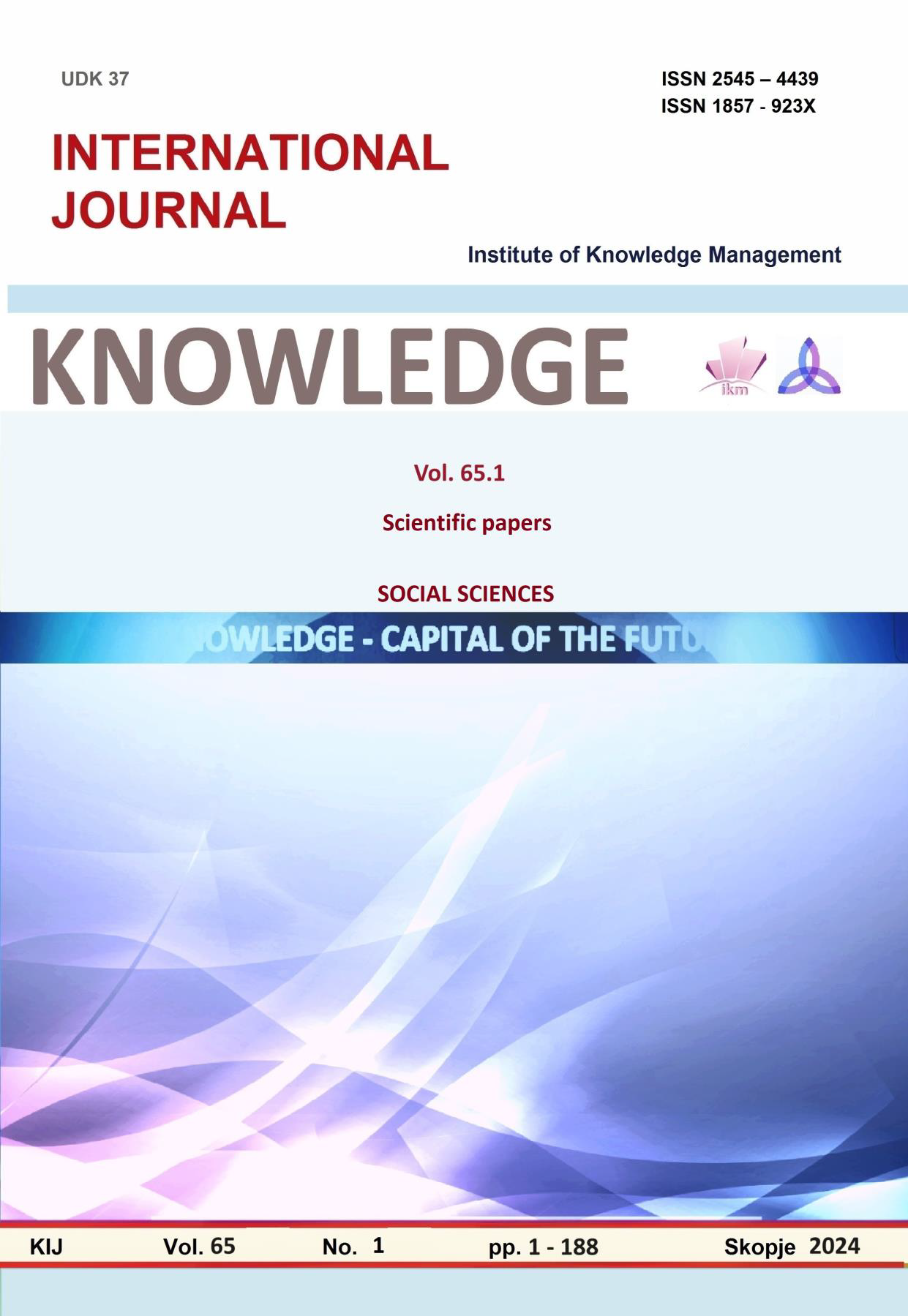SOFT COMPUTING PLANNING OF THE COMPANY‘S BUSINESS ACTIVITY
Keywords:
business activity, scenario planning, fuzzy sets, soft computing, uncertaintyAbstract
The business activity of the company expresses the creation of values for customers, owners and society. It implements strategic intentions in ongoing processes and activities. Establishes a link between the sustainability of long-term management and the flexibility of operational management. In Bulgarian literature, it is referred to as „economic activity“, which in turn is also used at the level of the sectoral economy, the national economy and the international economy. In applied research, business activity is usually associated with the turnover of assets and its impact on the efficiency and financial position of the company. In this article is treated as a broad concept integrating the intensity of the use of funds, the newly created value for a given period and the profitability for owners. At the same time, business activity summarizes the factor conditionality of entrepreneurial success from the dynamics of operations, the size of competitive advantages and the degree of capital profitability. The indicators Asset Turnover Ratio, Value Added Level and Return on Equity are used for business activity. The latter in today's uncertain and highly dynamic environment cannot be credibly planned by linear extrapolation of short-term trends into a long-term perspective. They require the development of a useful approach, regardless of non-linearity and uncertainties in economic development. As a solution, this article therefore proposes fuzzy financial indicators – model of scenarios for expected states, metered with fuzzy sets and soft computing. Implement tools from the field of artificial intelligence in strategic business management and analysis. In doing so, plausible alternatives for future estimates of the Asset Turnover Ratio, Value Added Level and Return on Equity are reproduced. Controlled approximation is introduced as an alternative about dealing with uncertainty, rather than classically ignoring it or reducing it to a simple prognosis. Based on the presented opportunity, a fuzzy model is proposed for planning the Temp of sustainable growth of the company's revenues is offered. It is essentially an intelligent platform that belongs to the group of Takagi-Sugeno fuzzy models and offers powerful computing potential with the ability to establish an accurate value result. Among its leading advantages can be mentioned speed, high flexibility and efficiency. It is also applicable for planning the business activity of companies from a large number of industries.
References
Атанасов, Д. (2024) Статистически основи на анализа на данни. Издателство на Нов Български
Университет, София
Бахусова, Е. В. (2012) Нечеткая математика для програмистов. Министерство образования и науки
Российской федерации, Филиал „Российский государственны социалный университет“, Тольятти
Велков, Ю. (2022) Финансово моделиране в условия на неопределеност. Сборник Научни трудове, МВБУ,
Ботевград, Том 14, с. 41 – 81
Georgiev, G., P. Vitliemov (2020) Literature Review on Business Intelligence Systems for Analysis of
Manufacturing Process. Proceedings of University of Ruse, volume 59, book 5.1, pp. 48 – 53
Георгиев, Р. (2013) Стратегиране и конкурентоспособност. „ПроМедия“, София
Ибрагимов, В. А. (2010) Элементы нечеткой математики. Министерство образования Азербайджанской
республики, Азербайджанская государственная нефтяная академия, Баку
Каплан, Р., Д. Нортън (2006) Балансирана система от покаазтели за ефективност. Как да превърнем
стратегията в действие. I издание, „Класика и стил“, София
Касърова, В. (2013) Финансов анализ. Издателство на Нов Български Университет, София
Константинова, С., А. Конарев (2016) Ликвидност и делова активност на индустиалните компании.
Списание „Финанси, застраховане и отчетност“, с. 297 – 302, СА „Д. Ценов“, Свищов
Консулов, В. (2011) Финансов анализ. Управление на оборотния капитал. „Интелексперт 94“, София
Kryvovyazyuk, I., I. Britchenko, S. Smerichevskyi, L. Kovalska, V. Dorosh, P. Kravchuk (2023) Digital
Transformation and Innovation in Business: The Impact of Strategic Alliances and Their Success Factors.
Economic Studies (Ikonomicheski Izsledvania), Vol. 32(1), pp. 3-17, BAS, Sofia
Ламб, Х., Дж. Леви, К. Куигли (2023) Изкуствен интелект. Издателство „Книгомания“, София
Михайлов, М. и кол. (2008) Анализ на търговския бизнес. „Фабер“, Велико Търново
Михайлов, М., М. Гергова (2003) Икономически анализ. Свищов
Прахалд, С. К., В. Рамасвами. (2009) Бъдещето на конкуренцията. Съвместно създаване на уникални
ценности с клиентите. I издание, „Класика и стил“, София
Танева, А., И. Ганчев, М. Петров (2019) Размита логика в управлението..Journal of Informatics and Innovative Technologies, Vol. 4(1), 2019, pp. 37 – 40
Тодоров, Л. (2014) Съвременни модели за оценка на бизнеса. „Нова звезда“, София
Трифонов, Тр. и кол. (1999) Корпоративни финанси. Първа част. I издание, “Тракия – М”, София
Чуков, Кр., Р. Иванова (2022) Финансово-стопански анализ. Издателски комплекс – УНСС, София
Ялъмов, Т. (2015) Автореферат на дисертационен труд за присъждане на образователна и научна степен „доктор“ на тема „Възможности за прилагане на метода на сценария в сектора на информационните и комуникационните технологии в България“, Технически университет, София





